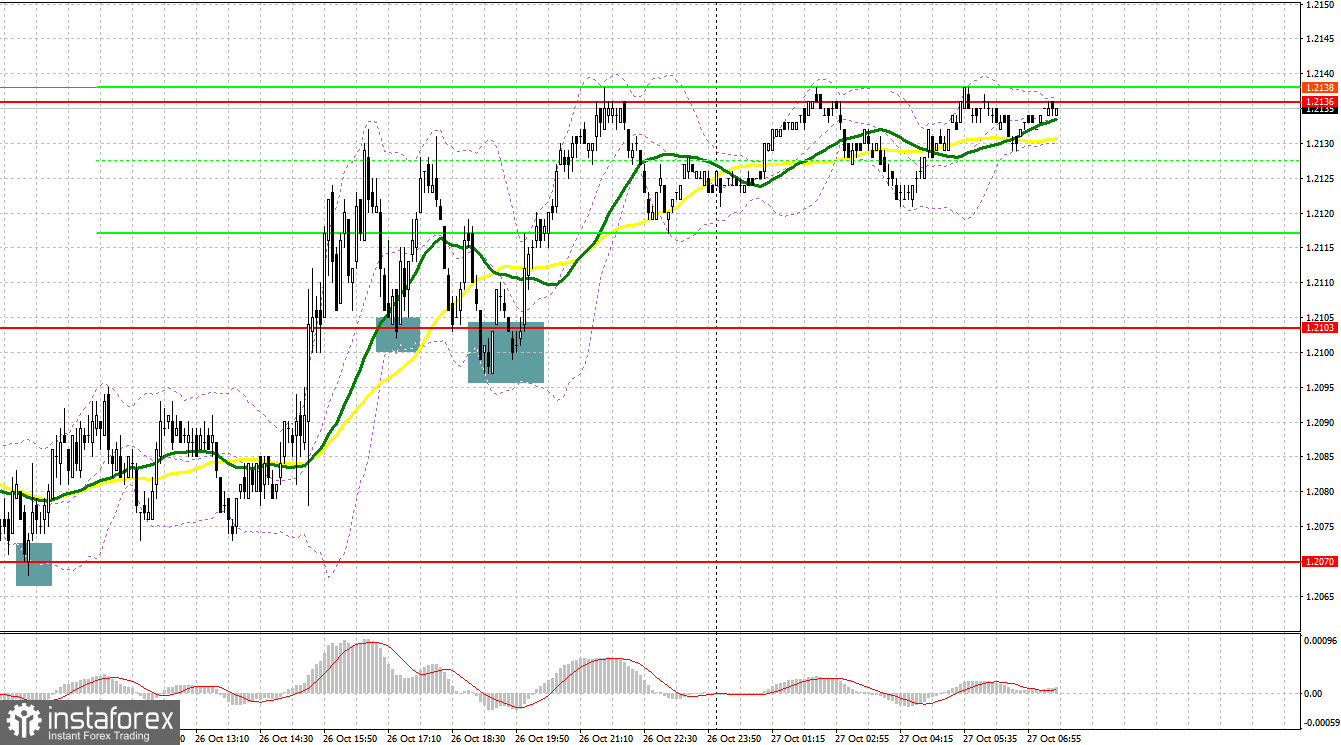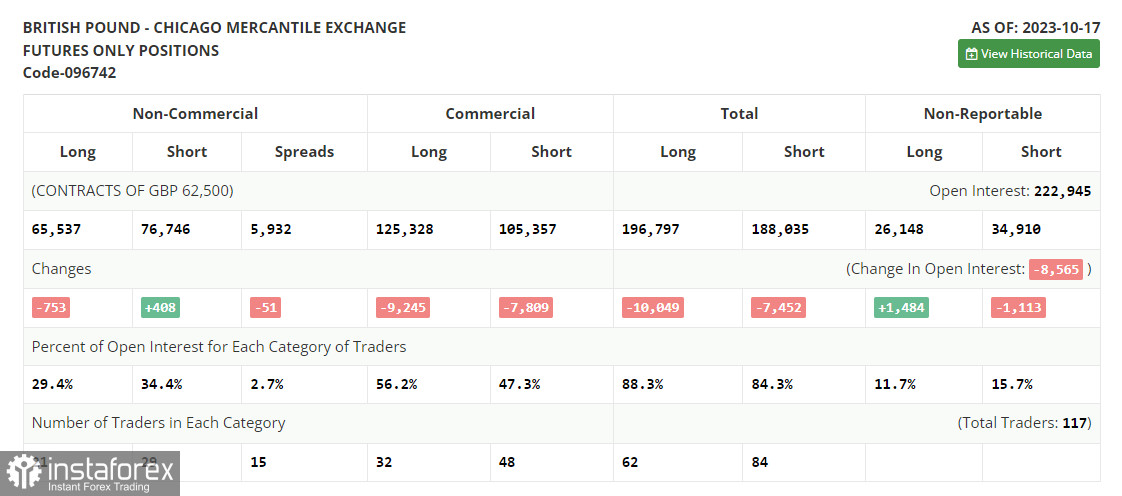Yesterday, the pair formed some great market entry signals. Let's have a look at what happened on the 5-minute chart. In my morning review, I mentioned the level of 1.2070 as a possible entry point. A decline and false breakout at this mark produced a great buy signal, sending the pair up by 25 pips. In the afternoon, a breakout and consolidation above 1.2103, as well as a retest, produced another buy signal. As a result, the pair rose by another 30 pips.

For long positions on GBP/USD:
Yesterday's US reports, although better than economists' forecasts, failed to push the pair to break the weekly lows and reach the monthly lows. The bears were one step away from taking full control of the market. Today, the pound may continue to recover. This is in the absence of influential economic releases. Another thing is the US data, which we will talk about in more detail in the forecast for the second half of the day. In case the pressure on the pair returns during the European session, I will act only after a false breakout around the nearest support at 1.2100 from yesterday. This is in line with the bullish moving averages. The target will be the 1.2136 resistance level from yesterday, which is where the pair is mainly trading right now. A breakout and consolidation above this range will allow buyers to re-enter the market and initiate long positions, aiming to retest 1.2172. The ultimate target is found at 1.2204 where I will be taking profits. In a bearish scenario without any activity from buyers at 1.2100, only a false breakout around the weekly low of 1.2070 will signal the opportunity to open long positions. I plan to buy GBP/USD immediately on a rebound from a low of 1.2038 with a daily correction target of 30-35 pips.
For short positions on GBP/USD:
Sellers did their best, but they failed to hold on to the weekly low. To maintain control over the market, it is crucial to defend the nearest resistance level at 1.2136, which was formed yesterday. A false breakout at this level will produce a sell signal, which could push the pair towards the support level at 1.2100. Breaching this level and an upward retest will deal a more serious blow to the bulls' positions, providing a window to aim for 1.2100. This is where buyers may step in. The more distant target will be the 1.2070 low, where I'd be taking profits. If GBP/USD grows and there are no bears at 1.2136, demand for the pound will return and buyers might have a chance for a minor bullish correction. In that case, I will postpone selling until a false breakout at 1.2172. If downward movement stalls there, one can sell the British pound on a bounce from 1.2204, bearing in mind a 30-35-pips downward intraday correction.

COT report:
The Commitments of Traders report for October 17 indicated a reduction in long positions and a slight increase in short ones. However, this did not significantly influence the market balance. Amid the UK inflation data signaling continuous growth and US policymakers assuring markets that there would be no more rate hikes in the near future, the US dollar eased while the pound took advantage of it. Apparently, the risk-on sentiment will continue to strengthen at least until the November meeting of the Federal Open Market Committee. The latest COT report indicates that non-commercial long positions decreased by 753 to 65,537, while non-commercial short positions went up by 408 to 76,746. As a result, the spread between long and short positions narrowed by 51. The weekly closing price dropped to 1.2179 from 1.2284.

Indicator signals:
Moving Averages
Trading just around the 30- and 50-day moving averages indicates sideways movement.
Please note that the time period and levels of the moving averages are analyzed only for the H1 chart, which differs from the general definition of the classic daily moving averages on the D1 chart.
Bollinger Bands
If GBP/USD declines, the indicator's lower border near 1.2085 will serve as support.
Description of indicators:
• A moving average of a 50-day period determines the current trend by smoothing volatility and noise; marked in yellow on the chart;
• A moving average of a 30-day period determines the current trend by smoothing volatility and noise; marked in green on the chart;
• MACD Indicator (Moving Average Convergence/Divergence) Fast EMA with a 12-day period; Slow EMA with a 26-day period. SMA with a 9-day period;
• Bollinger Bands: 20-day period;
• Non-commercial traders are speculators such as individual traders, hedge funds, and large institutions who use the futures market for speculative purposes and meet certain requirements;
• Long non-commercial positions represent the total number of long positions opened by non-commercial traders;
• Short non-commercial positions represent the total number of short positions opened by non-commercial traders;
• The non-commercial net position is the difference between short and long positions of non-commercial traders.





















